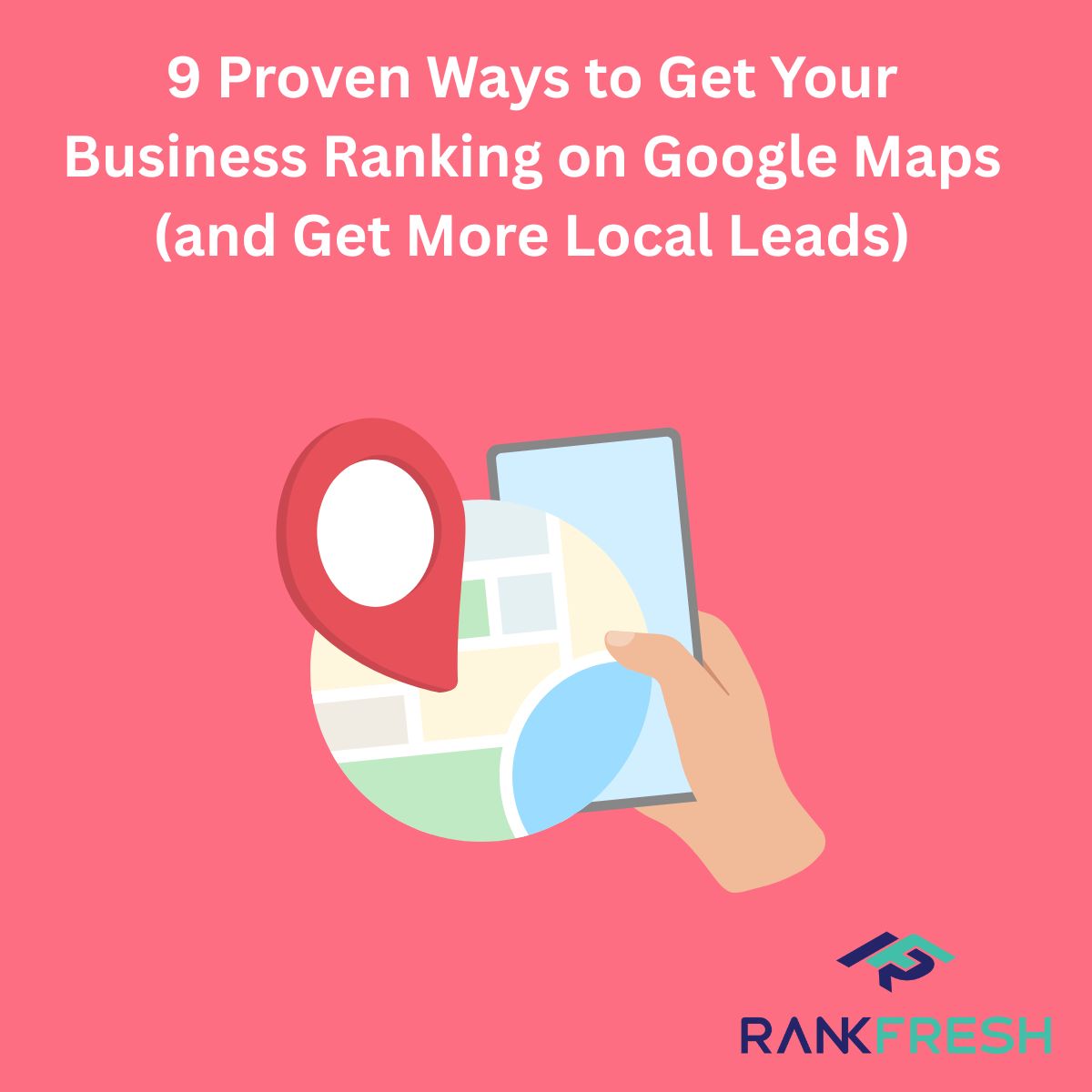If your business isn’t showing up on Google Maps, you’re invisible to the people most likely to buy.
Around 44% of people searching for a local business click on a Google Maps result. More than 60% of mobile users contact a business directly from those listings – no website visit needed.
So if you’re not in the Map Pack, you’re not in the running.
This guide walks you through how to fix that. Whether you’re a plumber, estate agent, café owner or tradesperson, here’s how to show up where it matters.
What Is Google Maps SEO?
When someone searches for “emergency plumber near me”, the first thing they see is a map with three local businesses. That’s the Local Pack. That’s where you want to be.
You don’t need a huge website or a big marketing budget. Google Maps SEO is about relevance, location and trust signals like reviews and profile activity.
If your goal is to get found in ‘near me’ searches, then ranking in the Local Pack is one of the best ways to do it.
Step 1: Set Up and Optimise Your Google Business Profile
This profile powers your Google Maps listing. It’s your digital shopfront. If it’s not set up properly, you won’t rank.
Claim and Verify Your Profile
Go to google.com/business, find or create your business, and claim it.
Google will either post you a code or ask you to record a quick video to prove your business location and show some paperwork. No verification means no visibility.
Complete Every Section
Fill out everything properly. Don’t skip the details.
- Business name
- Address and phone number
- Opening hours
- Categories
- Website and booking links
- Photos – interior, exterior, team, signage, vehicles
A full profile builds trust with Google and with potential customers.
Write a Proper Description
Explain what you do, who you help and where you operate.
Example:
We’re a Tunbridge Wells-based kitchen fitter specialising in full refurbishments and modern German kitchens.
Use a few local keywords but keep it sounding human.
Step 2: Keep Your Info Consistent Across the Web
Your name, address and phone number (NAP) must match everywhere.
If one site says “High Street” and another says “High St” or your phone number is different on your website and Facebook, Google gets confused.
It’s like giving the sat nav five different postcodes.
Audit your listings on:
- Yelp
- Yell
- Checkatrade
- Your own website
Want more ways to strengthen your local presence? These local SEO tips go hand in hand with your Google profile.
Step 3: Get Reviews and Respond to Them
Reviews do two things – they help you rank and they help people trust you.
How to get more:
- Ask after a job
- Text or email your review link
- Add it to invoices or thank-you messages
How to reply:
- Thank every reviewer
- Stay calm with criticism
- Show you’re paying attention
Reviews are modern word-of-mouth. If you want to level up your strategy, check out our post on mastering online reviews.
Step 4: Post Regular Updates
Don’t let your profile sit idle.
Post regularly – even once a week is enough.
Share:
- Offers or seasonal promos
- New products or services
- Job photos
- Event news
A dead profile looks abandoned. Posting shows you’re active and open for business.
Step 5: Use Local Keywords
Local keywords are simple – what you do plus where you do it.
Examples:
- Wedding photographer Hastings
- Dog groomer Tunbridge Wells
Use them in:
- Your Google Business Profile description
- Website content
- Blog posts
Don’t cram them in. Keep it natural.
Step 6: Get Local Mentions and Links
When local websites mention or link to you, it tells Google you’re a real business in that area.
Try to get listed or mentioned on:
- Local directories
- Supplier websites
- Community blogs
- Local news
You don’t need massive national coverage. A mention from a neighbouring business or networking group is more than enough.
Step 7: Make Sure Your Website Helps
Even if people contact you directly from your Google listing, your website still matters.
Make sure it:
- Loads fast
- Works on mobile
- Has clear contact details
- Includes a Google Map on the contact page
Think of your website like your van or shop signage. Doesn’t need to be flashy – just clean, fast and reliable.
Step 8: Track What’s Working
Google gives you useful data right in your profile.
Look at:
- What search terms people used
- How many times your profile was seen
- How many clicked to call
- How many tapped for directions
This isn’t vanity data – these are real customer actions. Learn what’s working and double down.
Step 9: Avoid the Pitfalls
Don’t take shortcuts. They don’t work.
Avoid:
- Keyword stuffing your business name
- Buying fake reviews
- Using a virtual office address if you’re not there
These get flagged and can get you suspended.
Keep Going
This isn’t a one-and-done job. It’s an ongoing habit.
- Keep posting
- Keep asking for reviews
- Keep checking your info
- Keep updating your photos
It’s like cleaning your shop window. You don’t do it once. You do it because it helps people notice you and step inside.
Want help?
Book a free website review and we’ll show you exactly what’s working, what’s not, and what to improve next.


